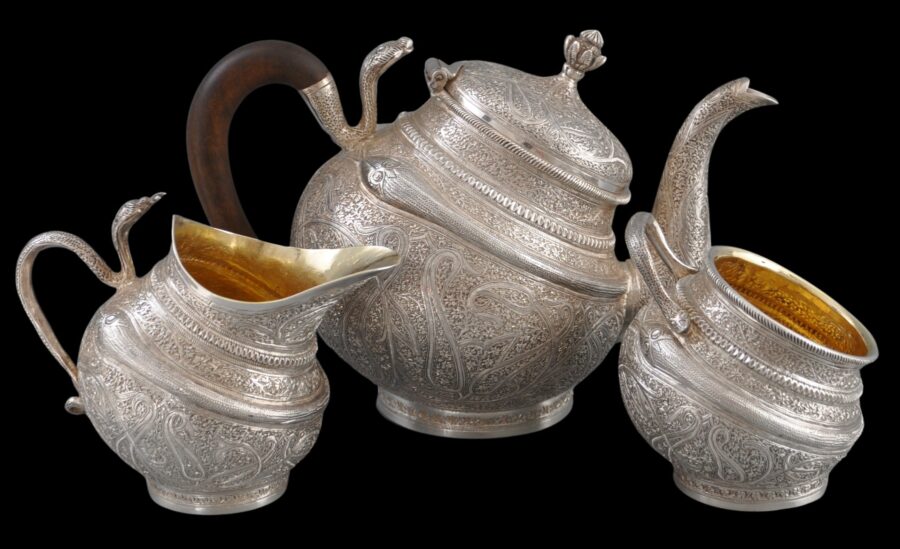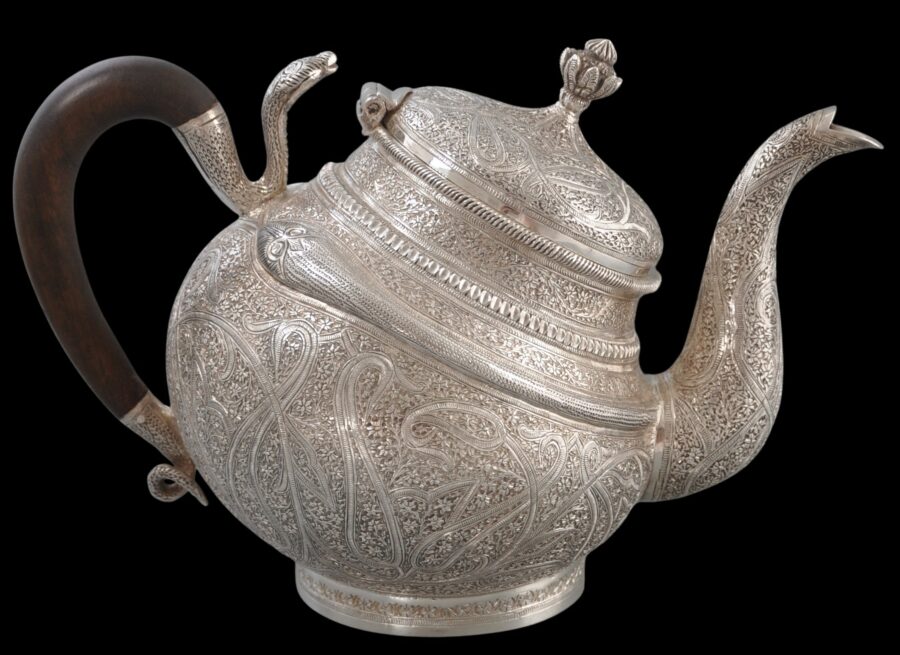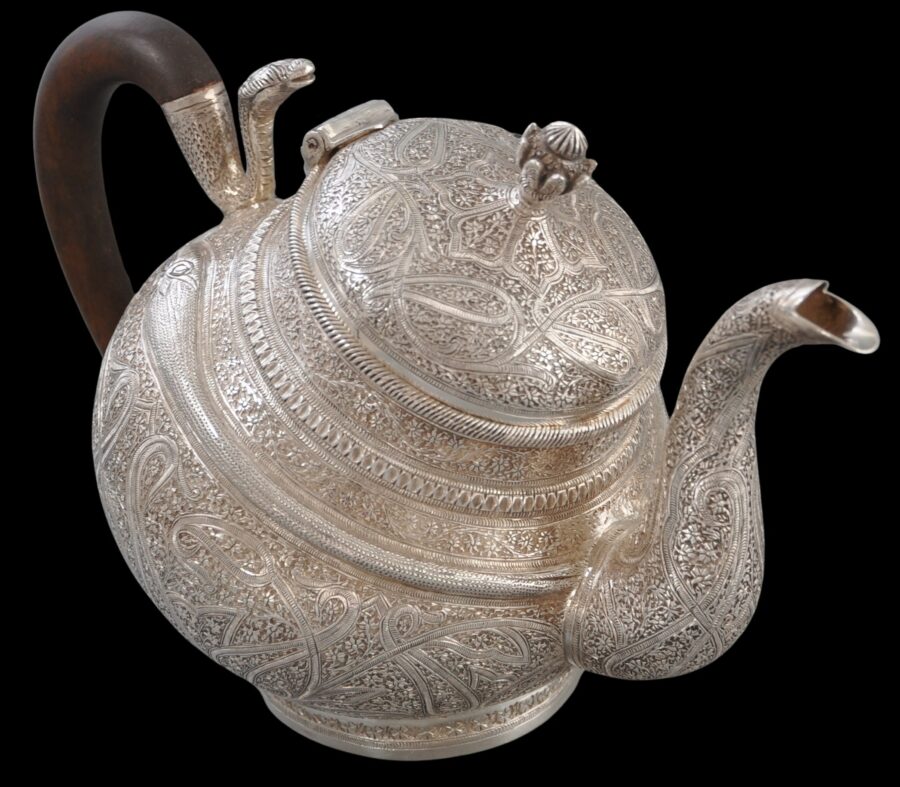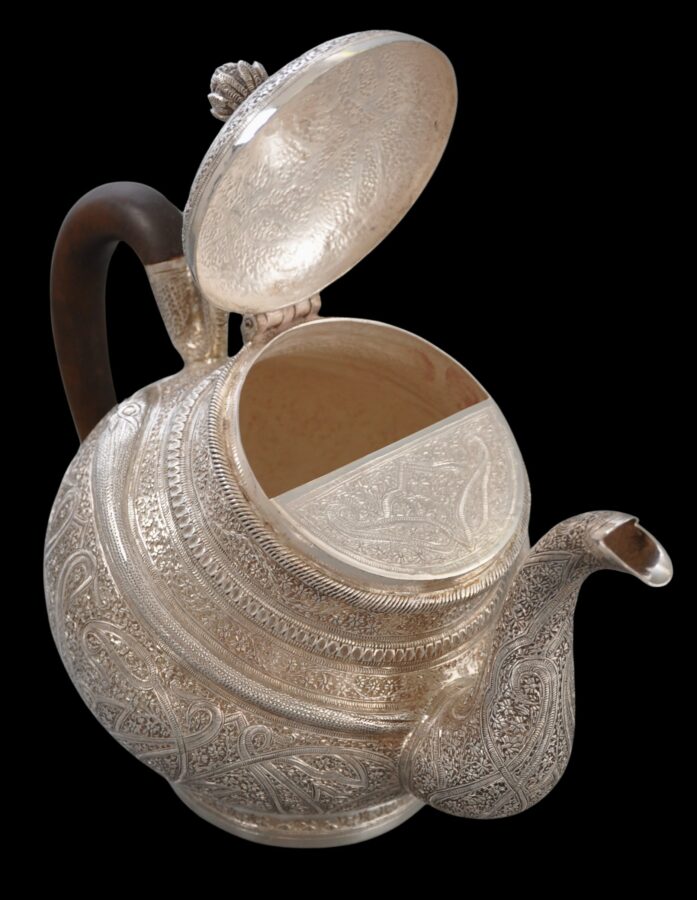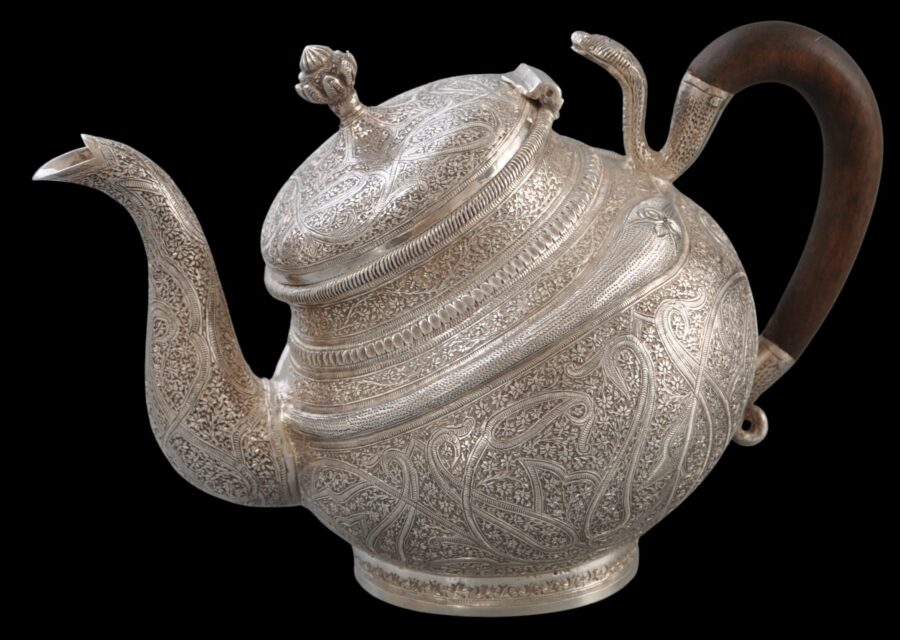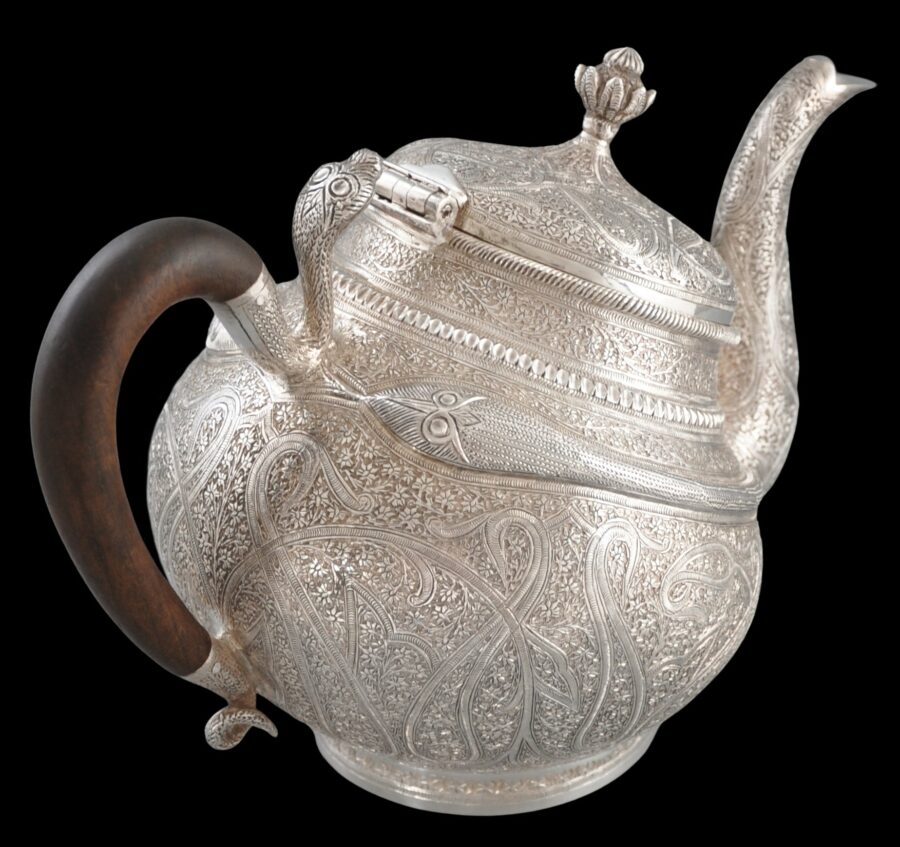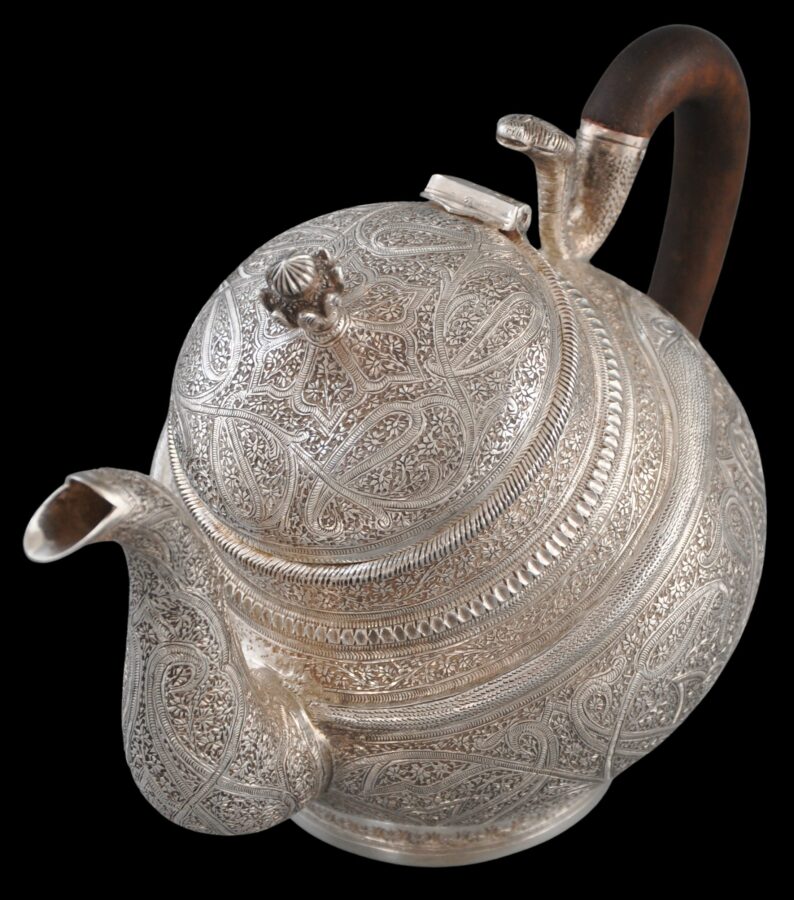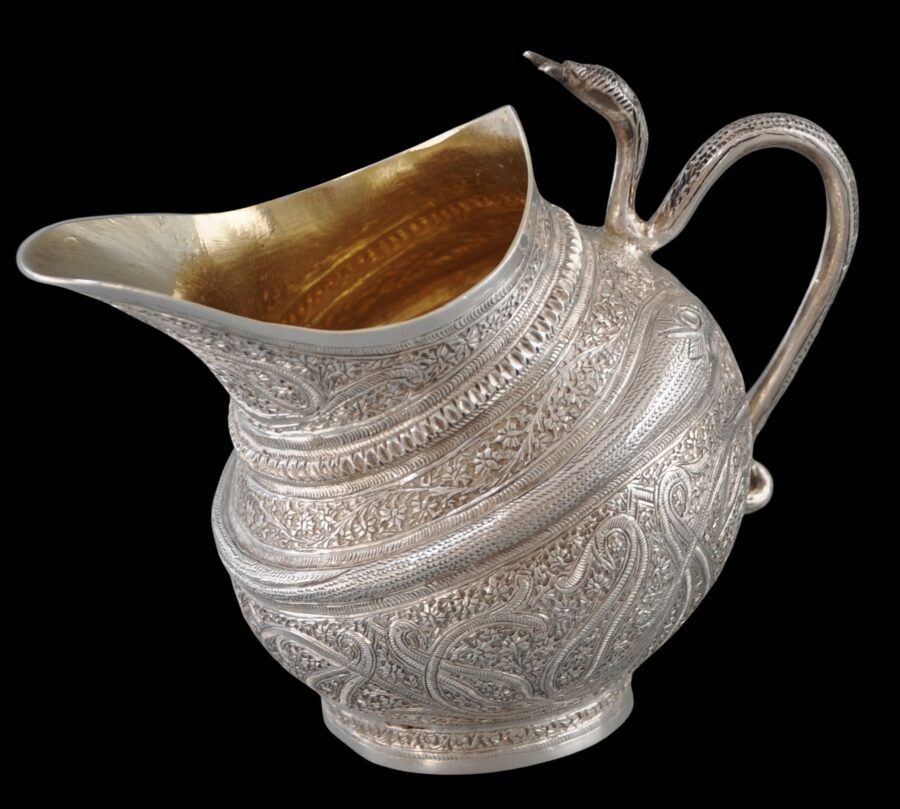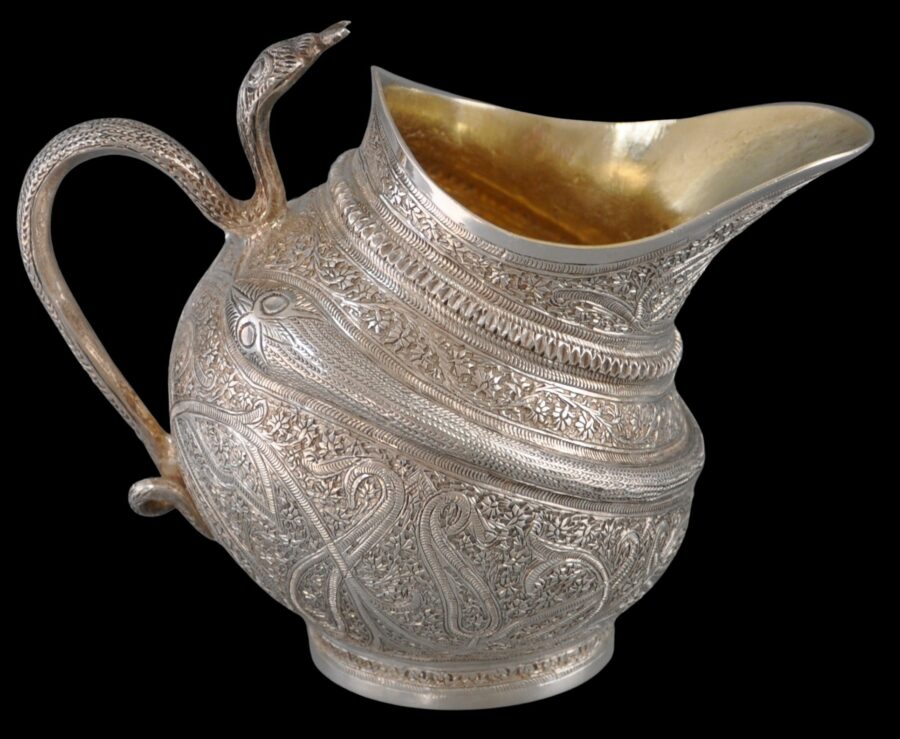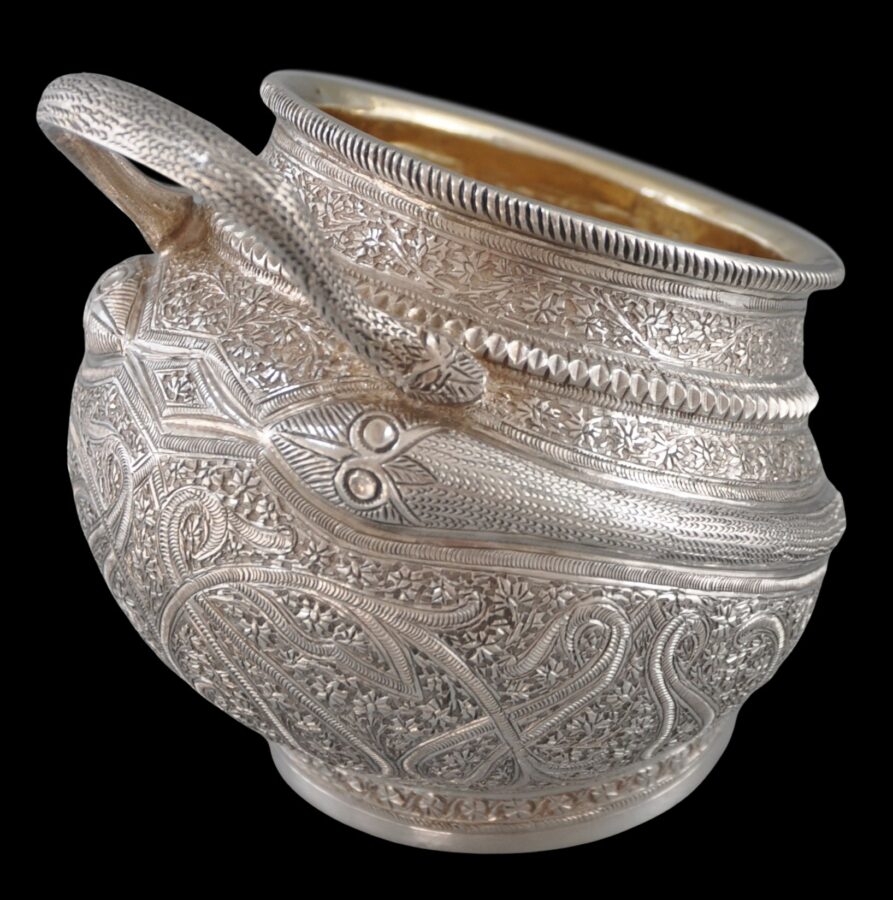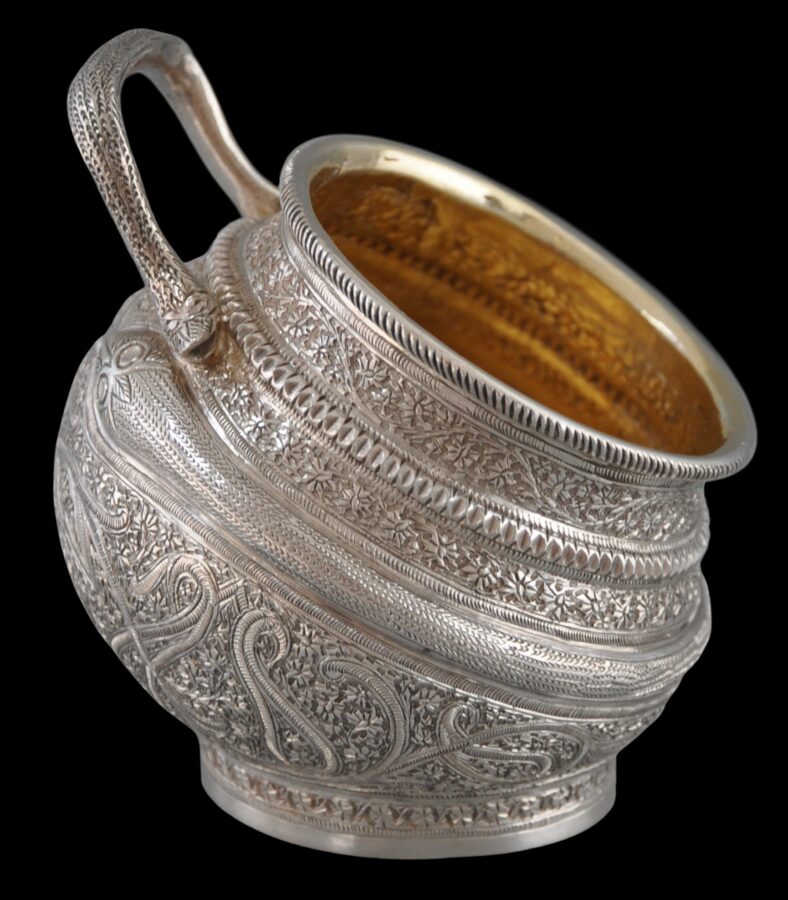This unusual tilting tea set is decorated in the ‘shawl’ pattern infilled with fine coriander flower and leaf motifs – motifs often seen on old Kashmiri silverware. Each piece is modelled in high relief with a pair of thick snakes wrapped around the body of the vessel.
The silver used is particularly high-grade and pure (higher than sterling).
Each piece is in the form of a kang, an earthenware vessel with origins in China and used across Asia, including Kashmir, to collect and hold rainwater. Kangs were made to sit on an angle so that ladles could more easily be inserted to scoop out the water.
Each piece sits on a flared and chased foot. The handle of each is in the form of a snake, with that for the teapot being supplemented by a carved piece of dark wood which doubles as an insulator to stop the handle from heating excessively.
The interior of the mouth of the teapot is fitted with a silver semi-circular guard to hold back tea leaves as the teapot is used to pour the tea. Even this is chased with the shawl and coriander pattern, even though it is not visible when the teapot is in use.
The interiors of the sugar bowl and milk jug have been gilded.
A similar set is illustrated in Wilkinson (1999, p. 109).
Overall, the set has an arresting, sculptural design.
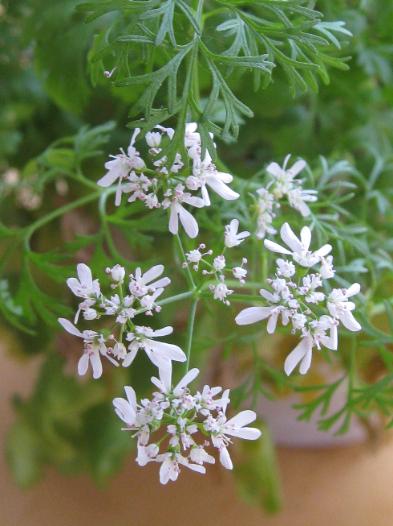
Above: The flowers and fine leaves of the coriander plant, a motif used in Kashmiri silver and extensively on this tea set.
References
Dehejia, V., Delight in Design: Indian Silver for the Raj, Mapin, 2008.
Wilkinson, W.R.T., Indian Silver 1858-1947, 1999.



